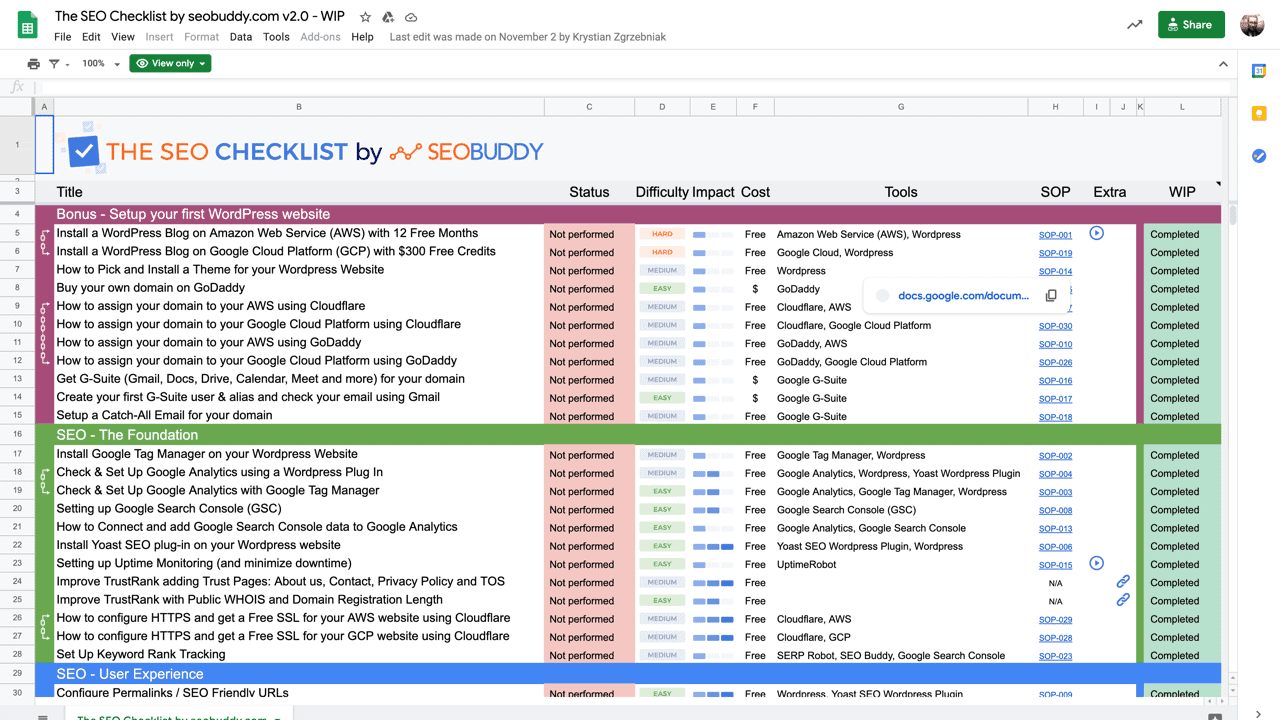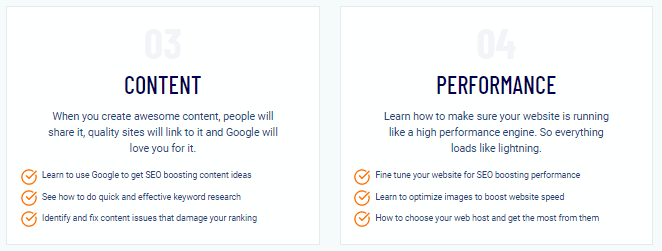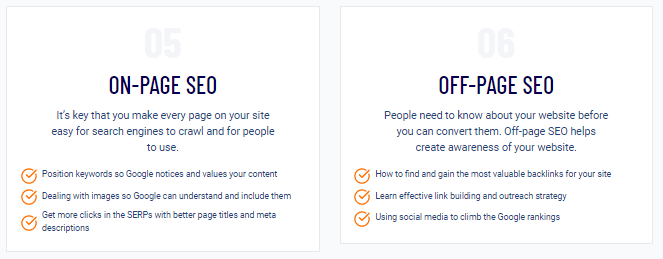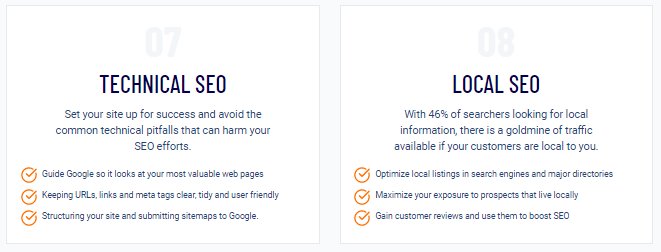When it comes to running a business on the internet, the most important thing you need to worry about is SEO’s proper usage. After all, optimizing your search engine tags is crucial to the success of your website. And we all know that not many people search further than the first page of their preferred search engine. The chances of your business succeeding are slim to none without search engine optimization. That’s why you need to invest some time looking into good quality SEO products or companies.
But as is the case with most things, when there’s a need to be met, the market explodes with options. Just like how for every Kung Fu Panda, there’s a Little Panda Fighter trying to rip some viewers off of the original, the same can be said about SEO companies. While some provide an excellent service, they are definitely bogged down by the sheer volume of cheap, untested, shady knock-offs. And while, sure, you could just go for one of the top companies that everyone uses. But do you have the money for that, especially since they can be unbelievably expensive?
And you must be thinking, but how? Well, with a little help from SEO Checklist, you’ll get all the tools you need for your own search engine optimization.
What is SEO Checklist
SEO Checklist is a packet of digital tools that will help you optimize your business. With these tools, you’ll be able to optimize your website on a simple step-by-step basis, without the need to read and learn massive eBooks or a needlessly complex manual. Instead, you’ll get a few simple PDF files to help you orientate with the main attraction of the bundle, the checklist itself. And if you are a beginner in SEOs, they even include more detailed step-by-step guides so that you can learn more easily.
So instead of having some random person doing all your work without you knowing whether or not they did a good job, you will be able to do the work yourself. And here’s a little inside info from someone in the know-how, doing SEO really isn’t that hard. It might seem complicated and convoluted, but in reality, it’s nothing more than ticking correct boxes (like some form of a Checklist, maybe?).
The SEO Checklist
So, as we said earlier, this packet’s real focus is the Checklist itself; everything else is additional content that will be covered in just a little while. The Checklist is a .xslx document compatible with Google Sheets and Excel programs that presents you with all the necessary variables that you need to make your website succeed.
To properly configure your SEO, the checklist will provide you with a multitude of options that you can take to optimize your website. Those would be the above visible rows. Each optimizer would then be grouped into sections, the colored rows and columns separating them into their respective groups.
Furthermore, each column then has a specific use. Starting with the Status column, as Title one is self-explanatory, the Status column shows in what step of the implementation process you are with the specified SEO. Next are the Difficulty, Impact, and Cost columns which are crucial for newcomers as they’ll show how accessible and important certain SEOs are. With them, you’ll be able to see what SEOs are free and easy to do. Lastly, the Tools tab shows you with which tools you’ll be able to achieve your SEO goals.
Now, let’s quickly look at each of those categories and what they could do to improve your website.
The Foundation
This group of SEOs focuses on the basics, such as setting up analytic and other similar plugins that will even benefit you later on as you progress down the checklist. Here we’d recommend that you follow even the harder tasks since, just like when it comes to building a house, you should never cheap out on foundations. Even if some of the tasks might seem a bit daunting, it’s best you do them now, then later learning they were a prerequisite to some more advanced SEO.
User Experience
Having a bad user experience is, literally, digging the website’s own grave. So this category is quite crucial in the functionality of the entire website. Some might even say this is the most important part of the Checklist. In this category, you’ll see SEO friendly URLs title that simply must be done. After all, if the viewers (be it electronic or human) would rather click on the “friendlier” looking URL than a big incomprehensive mess. That’s why you should check out SEOBUDDY’s article on the best tips for SEO friendly URLs.
Performance
Don’t you just hate when you go on a web store, and it takes an entire millennium for your shopping cart to register? Well, that’s probably because that website didn’t follow this category. The steps in it range from finding the best web-host to compressing and optimizing image files. You could skip this step, but you should steel yourself for frustrated user feedbacks then. After all, it’s like buying a car with a shoddy engine. So just optimize the performance of your website, and everyone will be happier for it.
Content
While the Checklist can’t dictate what your content is, it can provide useful reminders on techniques that will boost your SEO in the content itself. If you don’t research keywords or have a solid SEO strategy, it is no matter how high your content’s quality is.
According to Kevin Crockett, a personal injury attorney in Orange County, researching commonly asked questions on Google for his topic matter and then answering those questions with his content was incredibly powerful for his SEO.
While other categories deal with direct SEO problematics, the Content category deals with the more subtle details you would need to work within your content itself.
On-Page SEO
As one of the easiest rated categories on the SEO Checklist, On-Page SEO might seem a bit simplistic at times but don’t let that fool you. These optimizations can range from slight user experience improvements to critical keyword placements on your website’s page. Some might be obvious, such as, don’t write for the search engines but for your viewers as some beginners tend to focus too much on adding as many keywords as possible, at the cost of your page’s coherency. Another important point in this category is dealing with images. Search engines have a much easier job finding websites with image descriptions and tags embedded into the images. And let’s not forget that doing so also helps your website be more accessible, as image alt texts are one of the main ways blind people can view images online.
Off-Page SEO
The Off-Page SEO category is all about what you can do outside your own website to boost its numbers. From link building to social networking and even creating guest posts, this category is meant as an extra kick to your other more fundamental SEOs. While other categories deal with covering all of your basics, this category is the one that takes it to the next level.
Technical SEO
Just like any other business, building a website also has tiny little details that newcomers might miss out on, which are, in reality, quite important. This category deals with them.
Local SEO
Even though we live in a rapidly globalized world, it is important to remember the various benefits you get when you have a strong local community. That’s why the Local SEO category focuses on placing your business onto the map with Google and Yelp listings, reaches out for reviews, and so on. In this category, the work’s brunt will be manual, as opposed to using various tools like in other categories, and it might take a while as reviews and posts take some time to accumulate before you get to answer all of them. However, integrating local citation software can streamline some tasks, ensuring your business information is accurately listed across multiple platforms while you focus on engaging with your community.
If you’re unsure how to do some of the steps provided for you in the Checklist, don’t worry. There are instructional youtube videos embedded right into the Checklist tight alongside the standard operating procedures (SOPs) that have you covered every step of the way for each SEO you’d want to do.
And the best part is if you’re not new to SEOs, you can just use the checklist. It’s not a super complex eBook that you’d need days and days to learn, but rather a super simple spreadsheet that you glide through with relative ease.
But, if you are unsure of yourself, there are SEO Checklist eBook and Content Strategy PDFs. They are completely optional reading, but they definitely have some tips and tricks in them that even the most experienced analysts would be surprised to learn. And even then, instead of getting a massive book that even university valedictorians might have a tough time reading, you get a 63 page PDF. That PDF is a prime example of what SEO eBooks should be, as it doesn’t overcomplicate the procedures and tasks you need to do to improve your website’s SEO but instead just directly tells you what needs to be done.
So, to recap. SEO Checklist provides you with: The SEO Checklist Google Sheet & Web App with over 100 SEO pointers, Standard Operating Procedure Docs that illustrate 44 points in a step-by-step process, Content Distribution Checklist Google Sheet, The SEO Checklist eBook PDF, and The 52-Week Content Strategy PDF.
Conclusion
While The SEO Checklist bundle might seem a little bit pricey at first glance, the benefits you get from it are surely worth the price. With The Checklist, you’ll be able to perceive the bigger picture of what needs to be done as well as track what tasks you already did finish. And as it offers multiple options in the ways of step-by-step tutorials, you’ll be able to follow them with ease. As for the cons of The SEO Checklist, there aren’t any we can think of in terms of functionality. Compared to other SEO products, SEO Checklist outshines them all. And as we said, it might be a bit pricy, but we got you covered. With the code “WEBFACTORY” we managed to score you a 25% off discount on your purchase of the SEO Checklist.






